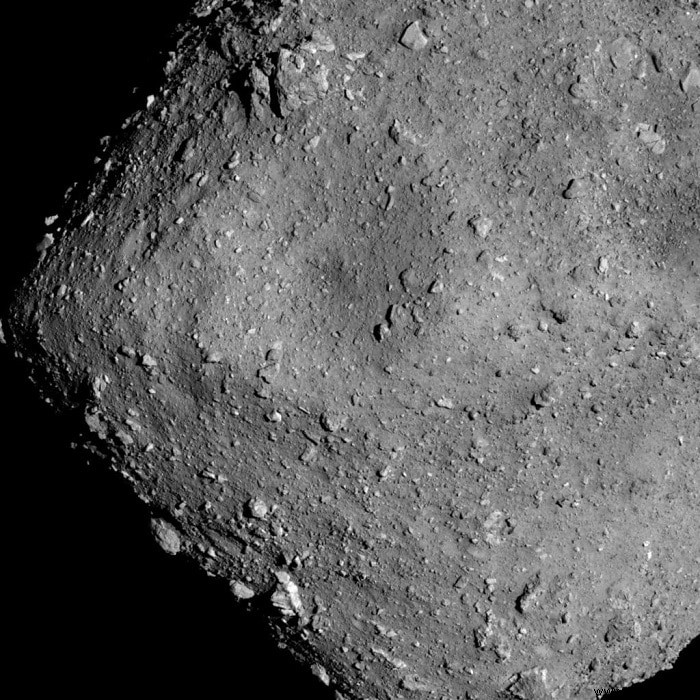According to a study, rock samples collected from the asteroid Ryugu by Japan are among the most primordial materials ever examined on Earth. These could give us insight into the origins of the Solar System.
Ryugu is a carbonaceous, or C-type, asteroid measuring 900 m in diameter. It evolves like a spinning top about 350 million kilometers from the Earth. Like other C-type asteroids, it probably still contains material from the nebula that gave rise to the Sun and its planets more than 4.6 billion years ago.
To find out, JAXA, the Japanese space agency, went there a few years ago to collect samples. On December 6, 2020, these samples finally landed at the Woomera Range Complex in southern Australia.
The researchers were obviously eager to be able to analyze these materials in the laboratory. The Ryugu samples could indeed shed considerable light on the formation and evolution of the Solar System, asteroids, as well as the role played by these carbon-rich objects in the appearance of life on Earth.
In a study published in Nature Astronomy, a team describes the results of the initial analysis.
These samples include approximately 5.4g of material . The largest rock particles are about eight millimeters in diameter. The smallest have diameters of less than one millimeter. All were handled in a vacuum chamber or in a sealed environment filled with purified nitrogen, so that they could not be exposed to the Earth's atmosphere.
The researchers then examined the samples using an optical microscope and various instruments capable of measuring how the rocks absorb, emit and reflect different lengths of wave of light in the visible and infrared spectra.
According to these analyses, these asteroid samples only reflect about 2% to 3% of the light that strikes them . They are therefore among the darkest ever examined.
The exact age of these materials is yet to be determined by future studies, but the researchers confirm that they are very, very old. “We are only at the beginning of our investigations, but our results suggest that these samples are among the most essential materials available in our laboratories “, emphasizes Cédric Pilorget, from the Institute of Space Astrophysics at the University of Paris-Saclay.
The researchers were also surprised by the density of this material. The mass of the particles divided by the total volume they occupy was indeed lower than that of known carbonaceous meteorites. These results therefore suggest that the rocks are very porous, possibly allowing water to infiltrate the interior. The team also found traces of ammonia-rich compounds, which could have implications for the origin of the asteroid.

As a reminder, these are just the first scans. Exposing all the secrets of this alien rock will take some time. “A lot of data will come to us by combining additional techniques, especially those that will be able to access very fine scales “, emphasizes Cédric Pilorget.
These additional examinations could tell us the chronological history of the asteroid's first formation and the age at which it made contact with water. Analysis of its organic compounds and other minerals will also provide key information about its original body. Finally, by analyzing volatile compounds, researchers will be able to study how solar winds have shaped the asteroid's surface over time.